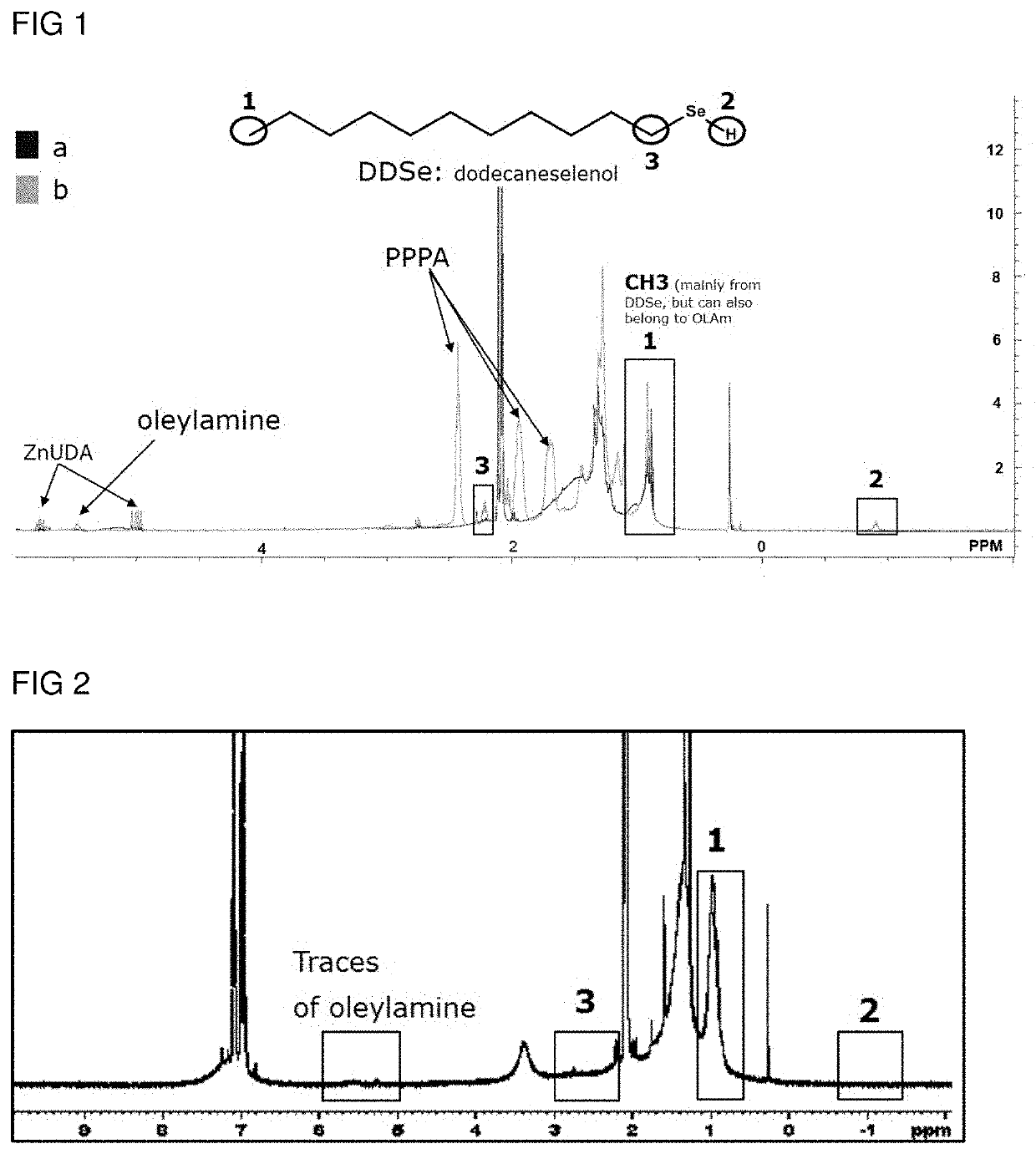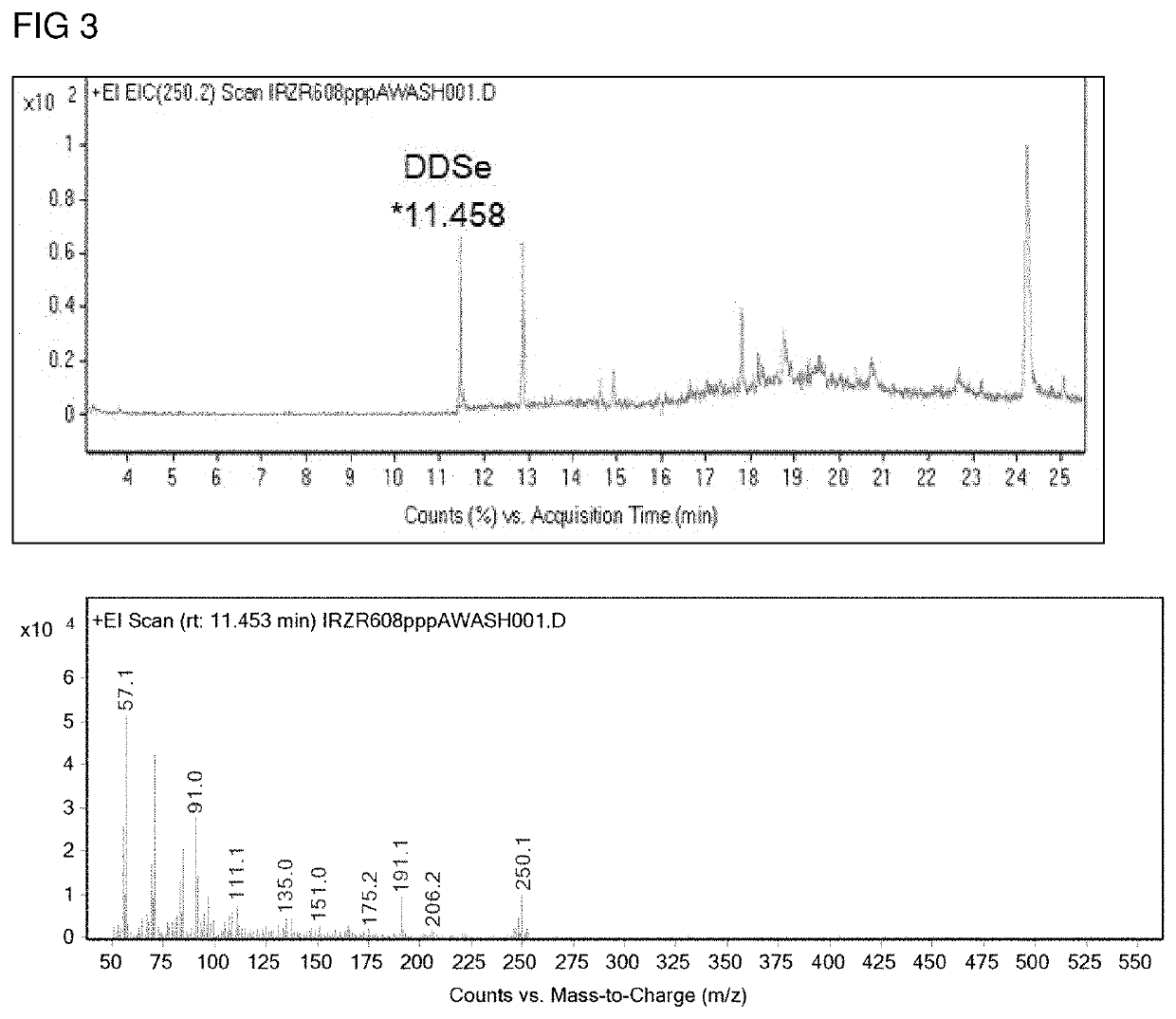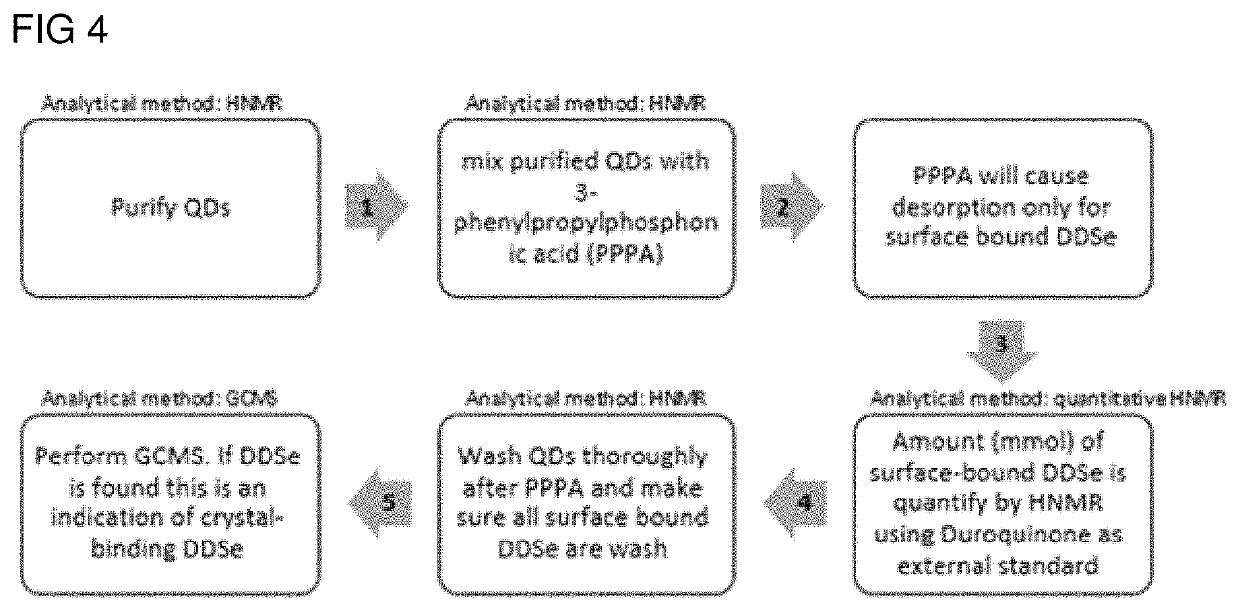Nanoparticle
- Summary
- Abstract
- Description
- Claims
- Application Information
AI Technical Summary
Benefits of technology
Problems solved by technology
Method used
Image
Examples
working examples
Core Synthesis Example 1: Synthesis of Magic Sized Clusters (MSCs) Cluster Synthesis
[0428]In a 500 mL 4-neck flask, weight 4.65 g (15.9 mmol) of indium acetate and 13.25 g (58.0 mmol) of myristic acid. The flask is equipped with a reflux condenser, septa and a tap between the flask and the condenser.
[0429]Put under vacuum at 100° C. for 8 h 15 min to off-gas acetic acid under reduced pressure, and overnight at room T.
[0430]Day after, the solution heat again to 100° C. and evacuate for 1 hour and 45 min in those conditions.
[0431]Total evacuation time at 100° C. for 10 hours,
[0432]At pressure: 85 mtorr.
[0433]Fill the reaction flask with argon and add 100 mL of dry toluene. Heat the reaction to 110° C.
[0434]Inject the mixture of 2.33 mL (2.0 g) of PTMS and 50 mL (43.5 g) of toluene into the flask with indium myristate (In(Ma) at 110° C.
[0435]The formation of MSCs was monitored via UV—vis of timed aliquots taken from the reaction solution. There was a gradual improvement in the peak sha...
working example 1
Synthesis on InP / ZnSe NPs in ODE, with 1-dodecaneselenol (DDSe) as Se Source
[0460]Outer layer synthesis: At room temperature, 8.3×10−8 mol of InP / ZnSe, described in comparative example 1, are dissolved with 0.2 ml toluene and transferred into 50 ml round bottom flask with 4 ml pumped 1-octadecene (ODE). After 30 min pumping at RT 1-dodecane selenol (0.2 mmol) is added and the flask is heated to 150° C. When temperature reached 150° C. Zn(Undecylenate)2 (0.2 mmol) is added and the reaction kept at 150° C. for 1.5 hrs. After 1.5 hours at 150° C. the reaction is terminated by cooling down the reaction mixture.
[0461]The resulting nanoparticles are is cleaned with a mixture of anhydrous toluene and ethanol (ratio crude:toluene:ethanol: 3:4:8). The process is repeated. Then the nanoparticles are extracted with hexane.
[0462]Table A compares the values of thermal, anti-radical, anti-peroxide stabilities for the described example and the comparative example 1.
working example 2
ynthesis on InP / ZnSe NPs in ODE, with 1-dodecanethiol as S Source
[0463]The working example is similar to working example 1, but 1-dodecanethiol is used as sulphur precursor.
PUM
| Property | Measurement | Unit |
|---|---|---|
| temperature | aaaaa | aaaaa |
| temperature | aaaaa | aaaaa |
| temperature | aaaaa | aaaaa |
Abstract
Description
Claims
Application Information
 Login to View More
Login to View More - R&D
- Intellectual Property
- Life Sciences
- Materials
- Tech Scout
- Unparalleled Data Quality
- Higher Quality Content
- 60% Fewer Hallucinations
Browse by: Latest US Patents, China's latest patents, Technical Efficacy Thesaurus, Application Domain, Technology Topic, Popular Technical Reports.
© 2025 PatSnap. All rights reserved.Legal|Privacy policy|Modern Slavery Act Transparency Statement|Sitemap|About US| Contact US: help@patsnap.com



